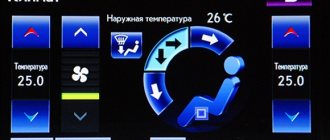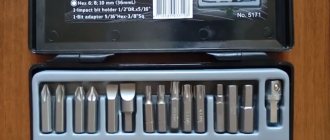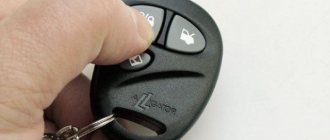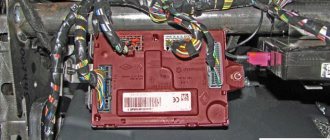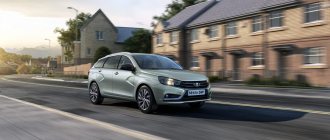Previously, cruise control and a speed limiter on the Lada Granta Luxe were installed from the factory, but since the summer of 2020 this option has been excluded from this configuration. In September 2020, sales of the updated Lada Granta family began, but this option did not appear on the restyled model. Did you know that you can install cruise control and speed limiter on the new Granta yourself?
Two conditions for successful operation of cruise control
:
- Cruise control and speed limiter only work on certain versions of the ECU. Tested on 11186-1411020-47 I445GBT2 (ECU is located behind the glove compartment).
- According to reviews from owners, AvtoVAZ has introduced storage of the type of steering column switches into the instrument cluster. This means that if a three-button switch is already installed in the car, then it will no longer accept a 6-button switch; the dashboard configuration must be reset (performed by DST-14 or paid Opendiag). In the Standard configuration, there are no buttons in the switch, and the panel is in a switch-waiting state, so after replacing the switch, the cruise control and speed limiter will work (on other trim levels the function will need to be activated).
According to the owners' reviews, you can change the configuration of the dashboard of the new Granta using the MDFlasher program (it's paid) by connecting via the OBD connector with a scanmatic:
Required
:
- steering column switch (article 1119-3709340-20)
- Steering column switch connector (part number AMP 174922-1)
- terminals to the dashboard connector (part number AMP 963715-1)
Cruise control classification
Such devices are usually classified as follows:
- Passive - inexpensive and simple devices. Such CCs can only maintain a constant level of machine speed.
- Adaptive is a more modern type of cruise control. Such systems can set a variable type of vehicle speed, as well as maintain a distance between cars. Adaptive cruise control is used on cars equipped with ESP and ABS, as these systems work together.
The process of installing cruise control is a complex operation that should be carried out by professionals. If the technician is not sufficiently qualified, more serious problems affecting ESP and ABS may occur.
%rtb-4%
What is cruise control
Cruise control is a system designed to automatically maintain a speed set by the driver. Activation of this system in a car allows you to maintain a given speed limit regardless of the terrain, without resorting to tiresome mechanical action of your foot on the accelerator pedal.
In cases where the road situation requires an increase in speed, for example, to overtake a passing vehicle, the driver simply presses the gas pedal and the car accelerates. To slow down the car, the driver uses the brake pedal.
Pressing the brake and gas pedals will temporarily disable cruise control.
However, when such manipulations are stopped, the system is automatically activated and restores the previously set speed, information about which is stored in the internal memory of the device.
Automatic speed control (cruise control)
The adjustment system has a cruise control switch - usually in the form of a single button. However, there are options with several buttons for different functions. Standard cruise control has a button that allows you to activate and deactivate the system. Another button, designated “set,” is used by the driver when the car reaches the desired speed. To improve information content, a corresponding display is displayed on the car’s dashboard, reflecting all actions with cruise control. Increased traffic on motorways has meant that standard cruise control, called passive cruise control, is increasingly being replaced by adaptive cruise control, which is a more advanced version of the system.
The main advantage of adaptive cruise control is the presence of additional functions that, although they do not replace the driver, make driving much easier and more comfortable. Such functions include automatically maintaining the distance to the vehicle in front, preventing unauthorized rolling down slopes, automatically braking when an obstacle occurs, etc.
Cruise control control
Cruise control can be activated both while driving and when the vehicle is parked. The activation of the system is accompanied by a corresponding light indication on the dashboard, the color of which depends on the car model.
Pressing the cruise control lever causes the vehicle to reach and maintain the last stored speed.
Typically, it can record speeds of 40 km/h and above. The presence of an emergency function in the cruise control allows you to instantly turn it off when you press the brake pedal.
Cruise control switch button
To control the cruise control function in some car models, only one button is used, pressing which automatically turns on the system. In this case, the cruise control is turned off by pressing the brake pedal by the driver. If there are five standard buttons on the car panel or a special cruise control lever, the system is turned on slightly differently. Pressing the “on” button brings the on-board computer into a ready state, and cruise control is activated by pressing the “set” button, after which the speed is adjusted by pressing the gas pedal.
In order to determine the procedure for turning on the cruise control system installed on a particular vehicle, you need to carefully examine the control lever. The simplest cruise control systems, controlled by just one button, are automatically activated when the button is turned on and turned off when the brake pedal is pressed. The speed is adjusted by pressing the accelerator pedal. In other cases, when the cruise control is controlled using five standard buttons, turning on the cruise control (the “on” button) only means that the car’s on-board computer is ready to activate this system, which is done by pressing the “set” button at the speed set using the gas pedal.
Some features for different types of cars
Two of the additional buttons are designed to increase and decrease the vehicle's speed. In most cases, each press increases or decreases the speed by 1 km/h.
cruise control may have several buttons
Here's a little instruction: cruise control is controlled by additional buttons
- Acceleration. Lightly pressing the lever and holding it in this position allows you to gain the desired speed without the driver pressing the gas pedal.
The accumulated speed is recorded and recorded in the device’s memory by releasing the lever.
Interruption (failure) of the set speed occurs in cases where the current speed for 1 minute exceeds the one recorded in the memory by 10-16 km/h (depending on the car brand), or the current speed is lower than the set speed by 8-10 km/h . To adjust the speed, you must recall it again from the cruise control memory or set it and save it again.
- Slowdown. Slowing down using cruise control is done in the same way: the corresponding button (lever) is pressed and, after reducing the speed to the required speed, it is released. In this case, the speed is fixed, and its value is stored in the device’s memory. Short-term presses lead to a decrease in speed by 1 km/h. In some cars, for example, the BMW 525td, as well as cars equipped with an automatic stability control system, in order to maintain speed it is necessary to write the set speed into the device’s memory and then use the cruise control in this way, the memory, relatively speaking, of this device already helps.
- Shutdown. The system is turned off by lightly pressing the corresponding button. Current driving conditions do not matter.
Turning off the engine leads to erasing the speed recorded in the device’s memory.
In addition, cruise control is automatically disabled when the driver brakes, accelerates above 1.5 m/s and when the automatic transmission control lever is moved to the neutral position (N position).
Features of installing cruise control
Before you begin installing the device, you should pay attention to some features:
- You can't install cruise control on just any engine, so you need to make sure that the car's engine is compatible with the device.
- The simplest is to install the passive version of the CC, which does not require additional devices. For the adaptive system, the correct operation of ESP and ABS is important, since without them the cruise control will not be able to function.
- During installation, there is no need to reflash the ECU, since only the device itself will be mounted.
What is adaptive cruise control (ACC)?
The main difference between classic cruise control and modern systems for automatically maintaining a given vehicle speed is the electronic ACC system, which in principle itself means adaptive cruise control. These systems allow the car to independently maintain, without driver intervention, not only a certain speed on the road, but also maintain it in accordance with road traffic, working automatically, i.e. reduce speed if there is a danger of a collision between the car and other vehicles.
Also, certain high-end cars take these adaptive cruise control technologies even further. For example, some automakers equip their products with semi-automatic autopilot, which is activated when the adaptive cruise control option is activated. As a result, we get the following: the car not only automatically maintains its speed and monitors the distance between other vehicles on the road, but also autonomously controls the car itself (for example, it smoothly turns or maintains the car’s course in the lane).
Cruise control installation instructions
The installation of cruise control on cars with an automatic transmission (automatic transmission) or manual transmission (manual transmission) differs slightly. The action plan is as follows:
- Replacing the brake sensor. To do this, you need to disconnect the wiring and carefully pull out the sensor with several turns. The new device is installed by holding the pedal assembly in the raised position. The sensor itself is part of the cruise control and is included in the package.
- Installing a cruise control button for easy control of the system. You will have to dismantle the airbag, unscrew the back of the steering wheel, remove the plug, and then proceed to install the button itself.
- Conducting testing. After all the work has been completed, it is necessary to test drive the system, maintaining maximum safety. If there are no complaints about the operation of the cruise control, we can assume that the work was successful.
Connection
Procedure
:
- Remove the instrument panel
- Connect the new steering column switch to the dashboard (green -> 23 panel pin, red -> 24, yellow -> 10, black -> “ground”)
- Run the dashboard for the first time with a test (press the daily mileage reset button and turn on the ignition), the cruise control and speed limiter indicators should light up.
The result of this simple modification in the video:
Did you manage to activate the standard cruise control on the new Grant? Write in the comments what version of the dashboard and ECU firmware you were able to do this on. By the way, you can activate cruise control remotely - service for activating cruise control on Lada Granta FL
History of cruise control.
The history of the cruise control system goes back to the 17th and 18th centuries, when engineers invented a speed control system for steam engines. These mechanical systems were subsequently adapted into the first automobile models (certain models) at the beginning of the 20th century. But in reality, cruise control, as we understand it, appeared only after the 1940s.
The first car equipped with cruise control was the 1958 Imperial, which was produced by the luxury division. The system was called "Autopilot" and was a conventional mechanical solution. It looked like this: -the dashboard was equipped with a mechanical disk on which the speed scale was printed. The driver, who was about to turn on the mechanical cruise control, had to select the desired speed on a round dial and turn the dial, which was connected to the driveshaft. Also, with the rotation of the speed selection dial, the electric motor was simultaneously turned on, which automatically adjusted the position of the throttle valve on the engine, thereby maintaining the required vehicle speed.
In 1965, American released a budget version of the cruise control system for its car models. But then, during the oil crisis in 1973, interest in the cruise control system suddenly disappeared. But starting from the late 80s, the popularity of this cruise control began to grow rapidly. Ultimately, most modern cars today can be equipped with cruise control.
Initially, this popularity of cruise control was observed in the United States. This was specifically due to the fact that in America traditionally and most of all people love cars with automatic transmissions, they love long trips throughout the country due to the huge network of expressways.
For example, the popularity of cruise control came to Europe much later, in comparison with the same United States of America.
But nevertheless, in Europe as in the USA, cruise control initially appeared only on luxury cars, and then this cruise control system began its journey and gradually began to spread to ordinary cars.
See also: How to keep your modern car clean so it can “see” in winter
But the first adaptive cruise control (ACC) appeared only in the early 1990s in Japan. Although the first generation of adaptive cruise control systems merely warned drivers of danger and advised them to reduce speed by pressing the brake pedal while the cruise control was on.
Only a few years later, adaptive cruise control systems began to appear in the auto industry, which autonomously regulated not only one throttle valve, but also the brakes of the car itself.
The first full-fledged cruise control appeared on a Mercedes S-Class in 1999, which was called “Distronic”. This system not only controlled the throttle, but was also able to control the brakes, maintaining the car's predetermined distance from the vehicle in front.
Since then, time has passed and automakers have begun to widely use adaptive cruise control (ACC). Ultimately, this ACC system today can be found on all cars without exception, from mini cars and hatchbacks to crossovers and sports cars.
It is worth noting here that due to the increase in car traffic on the roads of the whole world, this adaptive cruise control has become more useful (useful function) for many cars, in comparison with standard cruise, since its adaptive option allows the car not only to maintain the speed set by the driver , but automatically maintain a safe distance from vehicles ahead.
Installation of cruise control on VAZ 2110, 2111, 2112
There is a lot of controversy now about installing cruise control. Let's try to figure out what it is.
Cruise control (SAPS) - A device that maintains a constant speed of the car, automatically increasing the gas when the speed decreases and decreasing when it increases, for example, on descents, without driver intervention.
And so, if your dynamic driving around the city is replaced by long-term driving on the highway, then you involuntarily begin to think about such a useful function as cruise control. Is it possible to install cruise control yourself?
Cruise control is a device that can make driving a car easier over long distances. When your foot on the gas pedal begins to get tired, you just need to press a button and the car begins to maintain the set speed itself. Most often, cruise control is installed on an automatic transmission, but it can also be installed on a manual transmission. Cruise control was not installed on the 10 from the factory, so there is only one option - to consider universal cruise control.
For a car of the tenth family. You can install cruise control Mangoose AMG C20. As a result, another accelerator cable was placed under the hood, which was laid parallel to the standard one. It operates from a vacuum drive, which is powered by vacuum in the intake manifold. Control keys that allow you to activate cruise control and adjust the vehicle speed (higher/lower) are located under the central deflector. Cruise control is deactivated when you press the brake or clutch pedal.
In general, the operation of the device has shown itself to be positive, but there are also disadvantages. Due to the fact that cruise control is installed on the manual transmission, when overcoming an incline there is no way to switch to a lower gear in automatic mode. As a result, when driving in fifth gear, the power of the VAZ 2110 engine was enough to overcome 8% of the climb, but on the 10% hill the engine could not cope and the cruise control was turned off. The review of cruise control for this model ended with a diagram of the speed ranges in which this device operates.
Installing cruise control
.
We install an additional accelerator cable in the engine compartment of the VAZ 2110; we lay it in parallel with the standard one. It operates from a vacuum drive, powered by vacuum in the intake manifold. Using the control buttons you can increase or decrease the speed of the car. The process of installing cruise control on an injection engine has long been worked out, so there is no need to reinvent the wheel. Let's start connecting the electrical wiring, starting with searching for the tachometer signal. The search is carried out using an oscilloscope; we plug the device into the connectors on the instrument panel.
We find the tachometer wire and connect the green wire from the control unit block to it. The purple wire attaches to the brake light switch and can be found at the base of the brake pedal. On the reverse side of the connector on the control unit we see two paired wires: purple-black - power, gray-black - drive control. We connect the gray wire to the blue-black and blue-white drive wires. At this stage, it is important to determine the polarity; this is done in a proven way. We supply power to the control unit, at this moment the gearbox should operate, which reports the closing of the throttle valve. In the case when the damper opens, you need to swap the ends of the paired wires. In no case should there be an insulation breakdown on the gray paired wire, otherwise there is a risk of a short circuit, which means the fuse will blow or the transistor of the output stage of the control unit will fail. The power is connected last. The black wire is connected to ground, the purple wire is connected to the lock or ignition relay.
The starting price of the equipment is 5,000 rubles. If the installation costs much less, then there is reason to think about its performance and reliability. Depending on the configuration, it can be supplemented with functions, choose a more interesting design, etc. Standard cruise control has only one function - speed control. More expensive systems have their own remote control, memory and the ability to adjust speed. This device is really only needed if the driver has to drive a lot on the highway. When driving in the city, this function is absolutely useless, because there you have to constantly change the speed.
https://www.drive2.ru/l/10044389/
next article:
Installation of a zero resistance filter and screen for the Federal Tax Service in VAZ 2110, 2111, 2112
Contents of the article: 1. Installation of a zero resistance filter in VAZ 2110, 2111, 2112 2. Installation of a heat shield for the Federal Tax Service
Rating 0.00 [0 Vote(s)]
How does cruise control work?
The system serves as an assistant while driving, when the car goes on the highway, the driver just needs to set a certain speed limit, and the cruise control system will support it, regardless of the degree of complexity of the road conditions (descent, ascent).
At the same time, the driver may not press the accelerator at all, as a result, this will allow him to sit more comfortably and be less tired during long journeys. Sensors monitor the vehicle speed, throttle position and automatically transmit data to the system, which monitors the press of the cruise control buttons, the position of the control pedals and receives information about the required speed. The pneumatic actuator controls the throttle valve by regulating the air entering the engine.
Based on the principle of speed control, there are systems with proportional, derivative and integral control. If the system works well and accurately, it is able to quickly accelerate the car to a set speed and, regardless of the vehicle load or road slope, maintain it at the set speed. In modern cars, cruise control is part of overall safety, which works effectively in combination with ABS and ESP modules. The system can be installed on cars with any transmission (automatic transmission, manual transmission) and different types of engines.
However, in addition to its main purpose, the system’s functions also include fuel economy. Since the speed involuntarily changes during movement, fuel consumption is uneven. According to statistics, fuel consumption with the cruise control system turned on on the highway decreases by an average of 5-8% . Stable speed also has a beneficial effect on the wear of parts, reducing costs for car owners by approximately 2%.
The systems cope well with a number of additional tasks: they scan the space in front of the car while driving, and warn the driver in advance about a dangerous situation.
